#helena cambridge
Explore tagged Tumblr posts
Text

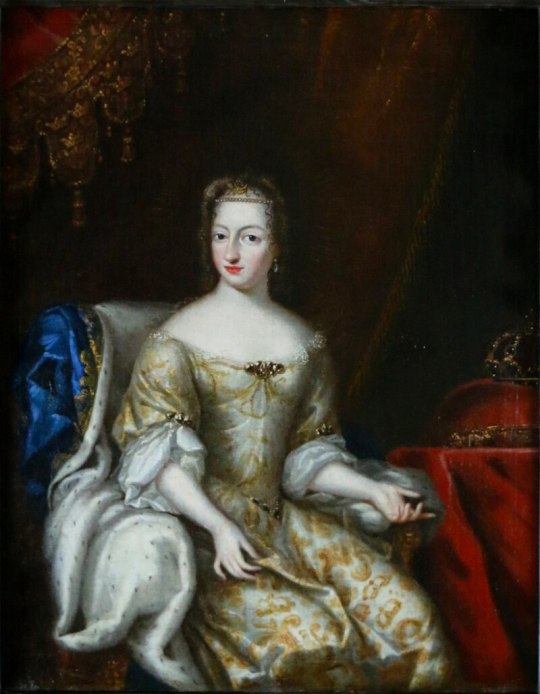
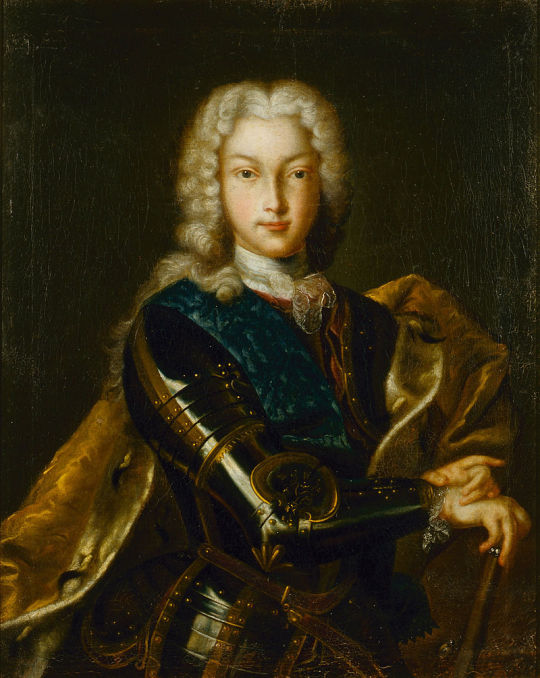
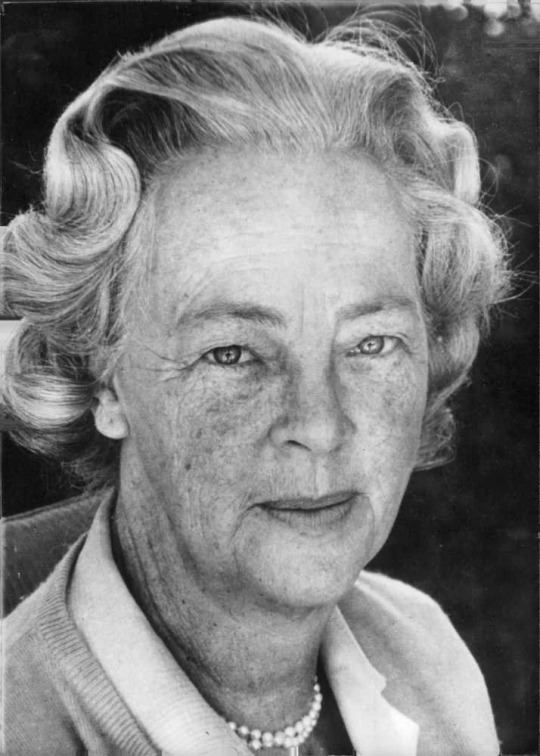
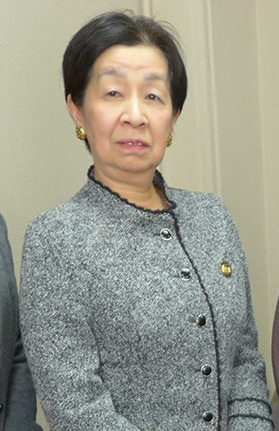
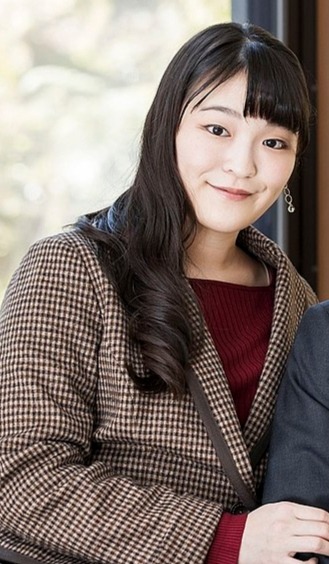
Royal Birthdays for today, October 23rd:
Charlotte of Valois, French Princess, 1516
Hedwig Eleonora of Holstein-Gottorp, Queen of Sweden, 1636
Peter II, Tsar of Russia, 1715
Helena Cambridge, Lady Gibbs, 1899
Masako Sen, Japanese Royal, 1951
Mako Komuro, Japanese Royal, 1991
#charlotte of valois#peter ii#helena cambridge#mako komuro#princess mako#Hedwig Eleonora of Holstein-Gottorp#Masako Sen#princess masako#royal birthdays#long live the queue
5 notes
·
View notes
Text

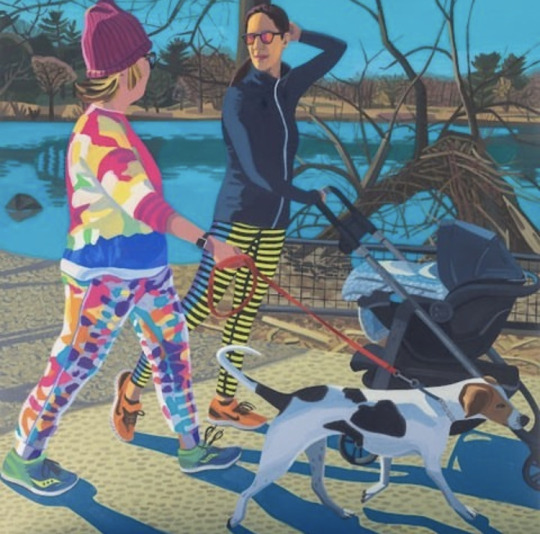
#repost @helenawurzel Helena Wurzel (Cambridge, Massachusetts, USA, 1980-). I recently became aware of Wurzel's work, including this instance of canine representation, through the collecting activity of @pamelahornik . First image is Iggy Takes a Ride, 2022, oil on canvas, 14 x 16 inches. Second image is Walk and Talk, 2021, oil on canvas, 48 x 48 in. @praise.shadows.art
#perro#dog#chien#hund#hond#beagle#dog walking#dog in car#boston artist#boston art scene#Cambridge artist#Helena Wurzel#koira#köpek#painting#contemporary painting#zeitgenössischemalerei#peinture contemporaine#pintura contemporánea#dogs in art#animals in art#animal art#c
4 notes
·
View notes
Text


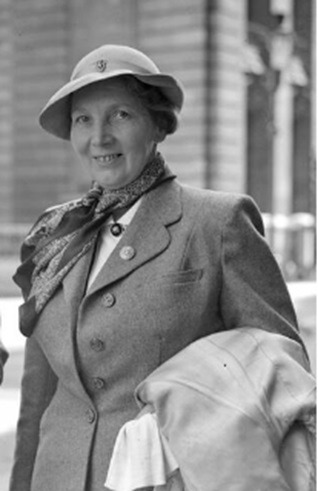
March 14th 1900 saw the birth of Scottish lawyer, Dame Margaret Kidd in Bo’ness.
Today, there are around 130 practising female advocates in Scotland. Before 1923 there had been none; then along came Margaret Henderson Kidd.
Margaret was brought up in Carriden, and that over the decade the Kidd family grew.; Margaret lived with her parents and now had five brothers and three sisters.
She educated at Linlithgow Academy, Kidd later studied law at the University of Edinburgh, graduating with an MA and LLB in 1922. Her early training was conducted with Mitchell and Baxter, writers to the signet, in Edinburgh. Although her first choice of career was the Foreign Office, the then Permanent Secretary, Mr Eyre Crowe, ‘was opposed to women’, so instead Kidd decided to follow her father and go into law.
In 1923, Kidd was called to the Faculty of Advocates and became the first female with the right to plead in the Court of Session, the highest civil court in Scotland. The event attracted great interest from members of the faculty and the legal profession, as well as the media. The Scotsman newspaper, as was typical of press coverage of women in the news, took special interest in Margaret’s outfit, reporting that she wore a ‘coat frock of black crepe morocain, a soft white collar with a narrow white bow tie, and a straw hat trimmed with velvet.’ Later in the day she donned the wig and gown as she formally entered her new role.
Between 1923 and 1948 she remained the only lady advocate. Kidd was the first lady advocate to appear before the House of Lords and before a parliamentary select committee. Kidd also had the distinction of becoming the first woman KC in Britain, preceding Helena Normanton and Rose Helibron who were appointed KC in England and Wales in 1949.
While Kidd appears to have downplayed the significance of her role and career in interviews – “I don’t know what they made all the fuss about” - it is clear that others, including her alma mater, were aware of and followed her progress. In the University of Edinburgh’s records of graduations, Kidd’s entry includes several newspaper clippings tracking parts of her career and life.
In 1930 Margaret married Donald Somerled MacDonald in Carriden Parish Church. Donald was a Writer to the Signet and member of the firm Scott and Glover, Hill Street, Edinburgh. . The couple went on to have one daughter, Anne.
During the Second World War, Margaret played a prominent part in organising Christmas treats and functions for the wives and dependants of men serving with the 14th Light Anti-Aircraft Regiment, and particularly the 39th Battery, of which her brother Col. J. T. Kidd was then in command.
Margaret’s professional life also led her to sit on the committee of Representatives of Poor Persons in Scotland as a referee under the Widows and Orphans and Old Age Contributions Pensions Act, and to undertake the Assistantship in the class of Public Law at Edinburgh University.
Margaret Kidd spent much of her life in India Street, Edinburgh. Donald had died in 1957, leaving Margaret a widow for over 30 years until her death on 22 March 1989 in Cambridge. A funeral service was held at the Canongate Kirk, Edinburgh. A eulogy by Lord Hope of Craighead echoed what had been printed about her 41 years earlier by the Scotsman:
‘Her success was won by strength of character, courage and integrity and is a mark of her true qualities that, despite what might seem to be the revolutionary nature of her achievements, she always held the affection and respect of others.’
18 notes
·
View notes
Text
Character bios of Laila Nadar, Emma Davies, and Caleb Walker below the cut:


Laila Nadar was born to Indian immigrants who moved to London ten years before she was born. Growing up, Laila always had an interest in literature, which led her to major in it at Cambridge University. While there, she met Emma Davis, her first year roommate. The girls would live together through all their years of school and into their postgraduate masters programs. Halfway through her undergraduate, Laila meets Caleb and introduces him to Emma. From there, an unbreakable friendship was formed between the three of them. They all received their masters degrees together and by some stroke of luck, had the opportunity to work at the same library in Exeter, a building called Mistwooden. However, after the three get settled in there, it's apparent the library is not what it seems.


Emma Davies was born in London through surrogacy to two doctors. Growing up, she always felt her mothers wanted her to follow in their footsteps, but she never wanted it. Instead, she was drawn to the classics and wanted to become an author herself. Her resolve only strengthened once she met her freshman roommate, Laila, and became friends with Caleb later on. As much as she wanted writing to be her career, it was pushed on the backburner as she was offered a job she just couldn't refuse. She packed her bags and moved to Exeter with Laila and Caleb, starting to work in the same place. The mysterious Mistwooden contained more than meets the eye, and with the help of her friends, she was determined to find whatever haunts the library she has come to consider home.


Caleb Walker was born in London to an actor and a musician, both of which graced London's West End multiple times before he was born. However, no matter how much he tried, acting wasn't for him, and neither was singing publicly. He did have some interest in being a playwright, which led him to start studying English at Cambridge. He met Laila in one of their classes which led him to meeting Emma as well, which created the bond that would bring the three of them to Exeter following them receiving their master's degrees. He is the one who found the jobs at Mistwooden, unaware of what awaited them there. However, once he learned what lurks beneath the surface, Caleb made it his personal mission to solve it once and for all.
Some facts that apply to everyone in the story:
Mistwooden is somewhat inspired by media like Scooby Doo and Nancy Drew. It is haunted by a variety of ghosts and other supernatural entities that were experimented on by a man named Doctor Hughes during some point in the 1800s. There are four specific ones that need helping, which are listed below.
Helena Davies, an ancestor of Emma. She was experimented on by Doctor Hughes who claimed he could cure her anemia. She was bled out and her body was never found. Played by Alycia Debnam - Carey.
Frank Jones, a newspaper boy. He was kidnapped by Doctor Hughes as a means to test out a new toxin. Frank died, of course, with his body being left on the streets. His parents were wrongfully blamed and prosecuted for his death. Played by Elliot Grihault.
Agatha Baker, a socialite. She went to Doctor Hughes for what she assumed was a pregnancy — however, there was no baby, and the abortion performed made her bleed out. Her death was attributed to another killer. Played by Lily Dodsworth - Evans.
Arthur Thomas, another doctor. Doctor Hughes was jealous of him, and killed him in cold blood. He made it look like a suicide. Played by Henry Golding.
At some point while solving all these cases, Laila and Emma start dating. By the fourth case being solved, they are engaged and have a date set for a wedding.
After each of the cases are solved, Caleb meets a marine biologist named Samuel Wright ( played by Jacob Collins - Levy ). They don't get married, but rather become life partners.
The three live within a mile radius of each other for the rest of their lives, choosing to remain in Exeter. Emma is able to become an author, Caleb goes on to teach at a local university after receiving his doctorate, and Laila becomes a book critic.
#02. Headcanon: Laila Nadar.#02. Headcanon: Emma Davies.#02. Headcanon: Caleb Walker.#not storm chasers but they are spooky finders... smth like that nlSIDUGLHAISDF#will add them to my carrd later today ❤️#MAYBE IT'S BECOS IM A LONDONER 🗣️#that's all of them
11 notes
·
View notes
Text

extra — you asked for this
➝ who the hell is in your bed, cassandra?
➝ word count: 3,3k
➝ warnings: cursing, mentions to hitler, homophobia, allusions to domestic violence, cheating, emotional abuse, stalking and comparisons between horses and people
➝ author’s note: my boss is being a real bitch today, so keep this adorable extra in tribute to her
Looking at the picture frame on the table, Albert Aldersey pressed his lips into a thin line. In the image, he was holding a newborn Helena, with a restrained expression, without showing any emotion. Beside him were his two eldest children; on the left, Jason looked at the camera seriously, while on the right, Cassandra was smiling widely, clearly excited about the new addition to the family.
“You never get tired of being a thorn in my side, do you?”, he thought to himself, looking away from the documents that Henry had left at Stansted House, at his request. And given the amount of paper inside, the man had worked hard over the past few weeks looking for information.
Upon opening the folder, Albert came across a large photo of a man. He had a smile on his face, his gaze directed somewhere to the left of the camera. Dark hair, brown eyes, white shirt with the first two buttons open. The logos embroidered on his shirt were all too familiar.
— Torger Wolff — he murmured, reading what was written just below the image, along with the photo credits. Nothing like the name Andromeda had told him when she spoke about her meeting with Cassandra at their youngest daughter's house.
He had realized something was unusual with his wife as soon as he heard her come into the foyer. He heard her telling John, the household’s head butler, that the things she had bought on Savile Row were in the boot of the car and should be taken to Albert's closet. He could hear Andromeda running quickly up the stairs, the sound of her heeled shoes echoing through the corridor.
— Andromeda — he shouted from the drawing room. The clicking of shoes stopped momentarily, as if the woman had hesitated for a few seconds before changing direction and heading towards him. As soon as she appeared at the door, Albert looked up from the newspaper and saw that there was, in fact, something wrong with her.
— Yes, Albert — she said in a low voice.
— Is everything okay? — Albert asked her, lowering the edition of the Daily Mail onto his lap.
— Yes — Andromeda replied, her voice tense. The navy blue dress she was wearing had a dark stain.
— Did you have any problems getting my suit?
— No, it was ready. John is taking it to your closet.
An uncomfortable silence stretched between them.
— What is that stain on your dress?
Looking down, Andromeda pursed her lips.
— I spilled tea on it.
— Where did you go for tea?
— I went to Pimlico to visit Helena. Jack is in Switzerland, she is alone with Tommy and I thought it would be nice to stop by, see how they were doing — she snorted, putting her hand to her forehead — But Cassandra was there...
Albert felt his muscles tense and his nostrils flare when he heard that name. “Damn it”, he thought, dropping the newspaper on the armchair and jumping to his feet.
It was a name he hadn’t heard in a while, and sooner hoped to forget; the greatest mistake he ever made, if he had any hand in her making, which was still an uncertainty to this day.
— And what did that bint say this time?
— Albert — his wife said, a reproachful edge to her voice.
— What, Andromeda?
— Please…
Albert couldn’t help himself. Any time his daughter was brought up in private company, he couldn’t help but talk about how she’d wronged him.
His daughter — if she was his, mind you — had always had a rebellious streak, thinking that she was too good to be just a wife and mother and had to make her own way in the world. She was an ungrateful aberration that spat in the face of the traditions and ideals that the family had held for centuries.
Albert had sent her to Cambridge to get a classical education and to meet an appropriate suitor, but instead, she decided to change her course without telling him or Andromeda, and ended up doing marketing, or some hogwash, for a motorsport team in Northampton. Even worse, the team she worked for was owned by the Germans! His grandfather, who was a Royal Navy officer in both World Wars, was likely turning in his grave, knowing his great-granddaughter was working for the company that made Hitler’s limousine. It would have been less awful if she’d worked for McLaren in Woking, at least they had a respectable English heritage.
— You know she is, there's no point in denying it. You try and bring a daughter up right by sending her to good schools, send her to university to get an education, try set her up with someone respectable, but she dates men without a pound to their name and takes some ridiculous job — he shouted — If she thinks we're going to take her back just because she finally realized that we were right all along…
— She found someone, Albert — Andromeda said, suddenly.
He couldn't hold back a laugh.
— Are you telling me that she found someone capable of putting up with her? — Albert said, mockingly — Because you'd have to be crazy to stand being around her for more than five minutes...
— It's worse than that — his wife murmured, running a hand over her face.
— And what could be worse than that?
— She's pregnant — Andromeda shouted, suddenly.
He felt like he’d been punched in the stomach. After hearing so many times from Cassandra herself that she wouldn't marry or have children because she wouldn’t give her parents the satisfaction, the news seemed unbelievable and infuriating in equal measure. Albert shot his wife a skeptical look.
— Are you telling me that Cassandra found a man witless enough to not only be around her for more than five minutes, but crazy enough to breed her?
— Albert, she's not one of your mares — Andromeda murmured.
— Even if she were, she’d have gone to auction straight away — he said — Too willful. Plus, my mares have a good lineage, good blood running through their veins, unlike that tart. And you know who's to blame, don't you?
That was the other effect hearing the name of his estranged daughter had on him — it reminded him of Andromeda’s possible indiscretion with one of his trainers some thirty-five years ago. His name was Seamus Doyle. Normally, Albert made a habit of not trusting the Irish, but his father had hired him when he was in charge of the stables. Albert kept him around after he took over because the man was as talented with horses as Albert had ever seen, like he practically spoke their language. However, when Cassandra started growing hair the same shade of red as Seamus’, he became suspicious. Nobody in his family or his wife’s family, to his knowledge, had had red hair, so it had to come from somewhere.
Andromeda denied it to this day, but Albert knew better.
Nevertheless, he knew people would talk if he treated Cassandra like the bastard he knew she was; it would reflect poorly on him and his wife both if word of Andromeda’s missteps came to light, so he had no choice but to raise Cassandra as if she was his own, but that didn’t mean he had to treat her like she was his daughter behind closed doors.
His strategy most of the time when she was growing up, was to simply ignore her, and it wasn’t surprising to him when their disdain for each other became mutual. It was easy enough to simply send her to boarding school and forget about her most of the time. He was too busy with the stables anyway, so he let Andromeda and the household staff handle things related to the children and simply signed the checks for the school bills.
Andromeda's eyes glistened with tears. “She knows what she did. It must be the guilt eating her up inside”, he thought, turning to the armchair and taking the newspaper he was reading in his hand. Albert was already near the door when he heard his wife call his name.
— What? — he grunted, without looking back.
— She said the baby's father is named Christian. He works in finance — Andromeda murmured.
A small smile appeared on his face. “That’s all I need”, Albert thought.
The next day, he contacted Henry, a private detective he had on retainer for certain occasions. He liked to be sure about certain things, like business dealings and the people interested in his children. He’d used Henry’s services when Jason told him that he intended to marry Rose, the girl he’d met at Cambridge and had been courting for a while, something he agreed on after an extensive investigation into the girl's background and family. They held no peerages or titles that he could find, but their family had long been in the jewellery business. They even made the medals and badges by the armed forces, and used in official investitures, which is why Albert gave his blessing to the union, despite Rose giving him nothing but three granddaughters and an enormous amount of headache.
Helena's boyfriend received the same sort of investigation, but, fortunately, the youngest had made a sensible choice. Jack was a relative of the Marquess of Normanby, and his parents had important ties with the royal family; the fact that he was, according to Henry’s dossier, the godson of the Duke of York, made him a perfect choice.
Cassandra, on the other hand, was the real problem. This was something he realized when she told him, in front of the then-Lord Glamis, during a dinner planned by Albert to introduce him to Cassandra in hopes of making a suitable match, insisting that she was not a broodmare to be auctioned off. Later, in his office, she defiantly repeated herself, telling him that she would never give him the satisfaction of her getting married or having children, which earned her a slap that left her face redder than her hair. Incensed, Albert told her that she made it incredibly difficult to put up with her, let alone love her, and she would end up an old spinster like her aunt.
However, that episode did not discourage her antics. After that, Albert had the impression that her determination to challenge his authority became even greater. The men she started to have relationships with were absolutely inadequate.
All the same, it made the man in the photo he was holding even more intriguing.
From what Henry had gathered, Christian was the man’s middle name. He’d included several photos of him; accompanying her to doctor’s appointments, and standing in the doorway of the dreary matchbox-sized townhome she’d lived in — that Andromeda had insisted on buying for her, for some reason, like she couldn’t afford to rent her own place.
His real name was Torger and he was born in Vienna, the son of an anesthetist and an art transport specialist, who died from cancer in the 1980’s. From what this “Torger” had said in interviews that were included in the dossier Henry prepared, he made his fortune in investing, especially in technology companies.
His involvement with motorsport came later, when he bought shares in the Mercedes-Benz Formula 1 team, becoming the team's CEO, which made him Cassandra’s boss. He didn’t want to even think about how his daughter managed to end up pregnant by her boss.
However, Cassandra’s choice still seemed strange to Albert, as this “Torger” did not have the profile of the man his daughter has had relationships with before. To his knowledge, she usually went for the brainy, academic sort. The one serious boyfriend he knew of — Callum, from what Helena had told him — was someone that she’d met at Cambridge, and had reconnected with when he was working on his doctorate at Oxford. He had no ambitions beyond his research, apparently, not even wanting to teach full-time. Typical.
Albert didn’t think there was anything wrong with getting an education, he was a Cambridge man himself, as was most of his family, for many generations, but he firmly believed that staying in school and collecting degrees was useless; one had to join the real world eventually and apply that knowledge somehow.
According to Henry’s dossier, this Torger person hadn’t even finished university.
— Mr. Aldersey? — a voice broke him out of his own thoughts. He looked up to see John standing in the doorway with a somber expression on his face.
— What now?
— Mrs. Aldersey is waiting for you to go to Lady Sybil's exhibition.
Albert snorted.
— Do I have a choice?
— I don't think so, sir — he replied with the shadow of a smile on his lips.
Letting out a sigh, he got up from the armchair and headed to the door, where John was standing, holding the tweed jacket that matched the waistcoat and trousers Albert was wearing. Albert threw it on as he headed downstairs.
When he arrived in the foyer, he found Andromeda standing near the door, adjusting her Cartier watch on her wrist. Hearing his footsteps, the woman looked up at him.
— I already told Sybil that we're on our way — she said.
Albert ignored his wife, straightening his lapels and adjusting his lapis cufflinks before heading out of the entrance of the house, where John had the Land Rover waiting. As he took his place at the wheel of the vehicle, Andromeda's voice was a mere whisper.
His mind was elsewhere, specifically on the gaps in Henry’s dossier. He had gathered a large amount of information about Torger, there was nothing relevant about his family other than the fact that his parents were immigrants. Albert hated it when Henry's reports didn't give a clear and objective view of those being investigated, especially their relatives. He could not imagine having the Aldersey name involved with people who did not live up to the importance and relevance of that family.
Aside from that, Cassandra was proving to him that she had made the first right choice in her life. The man was tall and fairly handsome, and had money. The fact that he was a bit older than his daughter was of no object, either, but it made him wonder if the poor bloke wasn’t desperate, divorced, or both.
After parking the car near the entrance to Sybil's gallery, Albert and Andromeda walked the few meters to the entrance in practically silence. At the door, in addition to a security guard, there was a woman dressed in a dark blazer, her blond hair carefully arranged in a low bun.
— Good evening, sir, madam — the woman smiled — Could you come with me?
The path to the room where the exhibition opening was taking place was a blur of color. Albert hated going to Sybil's gallery. He hated the clean, bright white walls and lighting, he hated the people that hung around the gallery, gawking at ridiculous-looking paintings and sculptures, he hated the vegan canapés she always served at the events she held.
But what Albert hated most was having to interact with Sybil's circle of friends. To him, not a single decent person would be caught dead there, just the artsy, continental pillow biters and muff divers like his sister-in-law. Andromeda could deny it all she wanted, but Albert’s suspicions were not unfounded. He had long suspected that Sabine, the French woman that was always with Sybil, wasn’t her housekeeper.
Upon entering the exhibition hall, he came across what seemed like a crowd milling about. The conversations filled Albert's ears, and he felt irritated by the sound of laughter and the clinking of champagne glasses.
— Romy! — Sybil's shrill voice sounded somewhere to his left. Turning his face, he saw his sister-in-law approaching with a wide smile and her hair down in gray waves. “Why doesn’t she color her hair? She looks so old and haggard”, Albert thought to himself — I’m glad you came!
— I would never miss an exhibition of yours, and you know I love porcelain.
Albert rolled his eyes.
— And that's exactly why I called you — she replied, before looking at her brother-in-law with a certain disdain — I'm surprised to see you here, Bertie.
Albert swallowed hard, grimacing at the stupid nickname. It was what his mother called him, but his dreadful sister-in-law found out once and never called him anything else.
— Why do you say that, my dear sister-in-law?
— As far as I’m aware, you’d rather look at horse’s fannies all day than at art.
— Sybil, please — Andromeda whispered, placing a hand on her sister's arm — Albert was very kind to accompany me here today.
The woman looked at him suspiciously.
— Bertie has never been kind to you, Romy.
— There's always a first time, isn't there? — Albert replied — Besides, what kind of husband would I be if I didn't protect my wife from the influence of the disgusting company you keep?
Sybil stepped forward, her eyes filled with anger.
— If you cared about protecting my sister, you wouldn’t put your filthy hands on her so much — she whispered, before putting a fake smile on her face and turning to her sister — Want me to show you what’s on display, Romy? There's a Hungarian vase that I'm sure you'll love.
With his nostrils flared and his face red with anger, Albert wanted to take his wife and leave immediately, and give his sister-in-law a piece of his mind on the way out. However, he knew that doing that, in addition to causing a scandal, would only give Sybil the reaction she wanted. He wouldn’t give her the satisfaction.
He picked up a glass of champagne from a tray carried by a passing waiter, trying to focus on something other than the terrible music booming through the gallery, or the cynical commentary of the people around him. He stepped toward one of the windows and glanced at his watch, praying that time would pass faster and that he could finally leave.
Albert was in the middle of his fourth slice of pesto and tomato toast when he noticed that Sybil and Andromeda were looking at the piece that was right next to him.
— Ah, Romy, this one was a real find — his sister-in-law said, pointing to the small figure protected by the acrylic — It's a figure of a pantalone made in Vienna around 1745. It was in a private collection for a long time before being sold to an Austrian antiques house. You know how I found it?
— How?
Albert glanced at the figure, but unimpressed. It was of an older bearded man in glasses. It looked like a clown to him, the kind of thing one would find in a charity shop and not a high-end gallery exhibition.
— I was studying to put together this exhibition and found a very interesting book about Austrian porcelain. It was written by one of the greatest experts in the field, Elisabeth Bednarczyk…
Albert's heart skipped a beat. It wasn't possible...
— Did you say Bednarczyk?
His sister-in-law raised an eyebrow.
— Yes, Bednarczyk. Elisabeth Sturm Bednarczyk, actually, she is a very well-known scholar and collector in Vienna.
That woman couldn't have the same surname as Torger's mother by mere chance. It couldn't be a coincidence, especially because Torger was from Vienna, and Albert couldn’t imagine that “Bednarczyk” was a common surname in Austria…
— Do you know if this Elisabeth has a sister?
Sybil raised an eyebrow.
— I only contacted her to buy the piece for the exhibition, Bertie. I don’t generally interrogate business contacts about their personal lives or hire private detectives to stalk them, unlike you. It’s almost like you don’t have enough personal issues of your own, isn’t it?
— Just doing my due diligence, Sybil — Albert simply replied, as he looked at the piece of porcelain. “And because of that, I know that this family just became my problem too”, he thought to himself, as he read Elisabeth Bednarczyk’s name on the base of the acrylic.
#toto wolff#formula 1 fic#wlffog#f1 fanfic#formula 1 fanfic#f1 fic#toto wolff x oc#formula 1 x oc#formula one x oc#f1 x oc#formula one fic#toto wolff fanfic#formula one fanfic#etlwlff
45 notes
·
View notes
Text
Through the prominence of the imperial crown, Anne is linked directly to the genealogy claimed for imperial majesty in England. It is also appropriate that the imperial descent is annexed by a woman: it was through his mother, Margaret Beaufort, that Henry VII traced his right to the throne back to Henry V, and from there to Arthur and Constantine whose union of English imperialism was claimed through his English mother, Helena. Anne Boleyn here, as another mother, will continue the legitimate descent of the English monarchy’s imperial claim. The pageantry and the verses together emphasise that this imperial claim is God-given through the imperial crown’s descent from heaven. Both Anne’s right to be queen ('she is heaven-sent') and the concept of imperial monarchy are legitimised through divine ordination.
Hunt, Alice. The Drama of Coronation: Medieval Ceremony in Early Modern England. Cambridge: Cambridge University Press, 2008.
5 notes
·
View notes
Text

Sir Cedric Hardwicke and Lady Hardwicke (Helena Pickard) rehearsing the play “Return to Sanity” at the Cambridge Theatre, June 1937
8 notes
·
View notes
Text

An eccentric pair of Londoners out and about in Islington recently have an interesting history.
Elena Propper de Callejón Bonham Carter is the mother of Helena Bonham Carter and has spent most of her life in North London, married to Bank of England Director, Raymond Bonham Carter, working as a psychotherapist.
Elena is the daughter of Eduardo Propper de Callejón, a Spanish Jewish Diplomat to France who saved 30,000 Jewish lives from the Holocaust during WWII.
Helena is a well known actor born in Islington … but what is not so well known is that she received no formal drama training. When she failed to get into Kings College Cambridge Helena entered herself in the actors directory Spotlight with some photographs taken by her father in their back garden in Golders Green, landing a role in TV commercial for stereo equipment aged 16 in 1982…. after taking the leading role of Room With a View in 1985 she has never looked back.
11 notes
·
View notes
Text

Lincoln Kilpatrick (February 12, 1931 – May 18, 2004) was a film, television, and stage actor.
Born in St. Louis, Missouri, he attended Lincoln University and earned a BA in Drama before he began acting. Encouraged by Billie Holiday, he began his career in 1959 in the Broadway production of A Raisin in the Sun. In the 1960s, he mainly guest-starred in television roles and bit parts in movies. His primary acting talents were showcased in stage and theater work, which he remained active in until his death. He was co-founder of the Kilpatrick-Cambridge Theatre Arts School in Hollywood. He was the first African-American member of the Lincoln Center Repertory Company.
He was married to singer and stage performer Helena Ferguson (1957-2004). They had five children: actor and composer Lincoln Kilpatrick Jr.; writer, director, and actor DaCarla Kilpatrick; actor and director Erik Kilpatrick; actor Jozella Reed; and producer Marjorie L. Kilpatrick. #africanhistory365 #africanexcellence
7 notes
·
View notes
Text
Pride 2024 - Day 27

Movie: Maurice
Made in: 1987 – Set in: 1909 – 1913
Starring: James Wilby, Hugh Grant, Rupert Graves, Ben Kingsley, Mark Tandy, Denholm Elliott, Helena Michell, Billie Whitelaw, Judy Parfitt, Phoebe Nicholls
Rated R for: brief language, nudity (buns and willy)
Based on the book by E.M. Forster, it follows Maurice Hall as he enters Cambridge and befriends fellow student, Clive Durham. Their friendship soon blooms into love, but the scrutiny against homosexuality keeps the two from going too far in their relationship. After the arrest of a fellow student for homosexuality, Clive ends their romance and marries a young girl named Anne while still trying to keep a friendship with Maurice.
It’s a character driven romantic drama that shows the hardships of being homosexual during the early 1900s and showcases two types of people: one who values happiness and love over reputation and security and the other who is willing to ignore his true self to keep his place in society.
Spoilers under Keep Reading Line
No one dies in the end and Maurice and Alec get together.
I liked this movie pretty well, even more so with Maurice and Alec getting together in the end. I half expected it to end unhappy just going by the time it is set and when it was made, but was happy to see that didn’t happen. I can understand why Clive breaks up with Maurice, as it’s really easy to lose everything if someone saw them together. But it was clear he wasn’t completely happy in his marriage with Anne but it was his choice to marry her, so I guess he just had to lay in the bed he made. Maurice didn’t seem to even really consider what would happen if they were caught as he didn’t try all that hard to hide it. I think he was a better fit for Alec and though I would have liked to see what they did with their life after getting together, I like the ending with Clive. It really shows a moment of him wondering what could have been and perhaps feeling regret that he wasn’t able to take that chance with Maurice. It was a little dickish that he invited Maurice to his wedding, though. I had only seen Rupert Graves in newer things so it was a bit of a surprise to see him so young and baby-faced XD
Mom’s Thoughts: This film could be considered a historical, since it takes place during the early twentieth century (most of it takes place around 1910-1913). At the time being a homosexual was illegal and one could be arrested, flogged and sent to prison to do hard labor for even a minor thing as a man kissing another man on the mouth. Clive learns this happens to one of his former classmates and is scared to continue a love relationship with Maurice telling him they will now be platonic friends. Clive goes on to marry Anne and live as a heterosexual. Maurice is heartbroken but finds a new partner with Alec Scudder, the gamekeeper at Clive’s country estate. It’s an interesting story that has no real violence and no one is killed during the movie. The movie ends with Maurice still with Alec. I wouldn’t mind watching it again sometime.
4 notes
·
View notes
Text
Echoes From the Gnosis - The Gnosis of the Mind - All Volumes
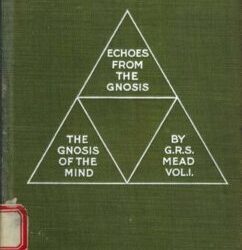
Echoes From the Gnosis Echoes From the Gnosis - The Gnosis of The Mind is written by G. R. S. Mead the first modern scholar of Gnostic tradition. G. R. S. Mead was the secretary of H. P. Blavatsky and in 1906 he published the first volume of eleven in the series Echoes From the Gnosis. The works are a combination of translations and interpretations of ancient Gnostic writings. Long before the discovery of the Nag Hammadi Library, Mead translated these esoteric texts of various origins such as Christian and Roman. Unfortunately, I have only been able to find six of the eleven volumes, download Echoes From the Gnosis here:

The Gnosis of The Mind (Echoes from the Gnosis Vol. I) The Hymns of Hermes (Echoes from the Gnosis Vol.II) The Hymn of Jesus (Echoes from the GnosisVol. IV) A Mithriac Ritual (Echoes from the Gnosis Vol. VI) The Gnostic Crucifixion (Echoes from the Gnosis Vol. VII) The Hymn of the Robe of Glory (Echoes from the Gnosis Vol. X)
Who was G. R. S. Mead?
George Robert Stow Mead was born in 1863 in Nuneaton, Warwickshire, England. He was educated at St John's College, Cambridge, where he studied mathematics and classics. His intellectual prowess was evident from a young age, and his academic journey set the stage for his later work in philosophy, religion, and mysticism. Involvement with Theosophy In 1889, Mead became a member of the Theosophical Society, a group dedicated to exploring esoteric knowledge and advancing a synthesis of science, religion, and philosophy. He was particularly influenced by Helena Petrovna Blavatsky, the society's co-founder, becoming her secretary and developing a strong interest in the esoteric and occult that would define his life's work. Contributions to Esoteric Studies Mead is perhaps best remembered for his comprehensive studies on Hermeticism, Gnosticism, and other ancient religions and philosophies. Unlike many scholars of his time, he approached these subjects with a sense of spiritual respect and scholarly rigor, helping to revive interest in religious traditions outside of mainstream Christianity. Notable Works Throughout his career, G.R.S. Mead produced an impressive array of books and papers that explored a wide range of topics in religion, philosophy, and the esoteric. Some of his most influential works include: - Fragments of a Faith Forgotten (1900): A detailed exposition of early Christian Gnosticism, exploring texts and beliefs that were suppressed or marginalized by orthodox Christianity. - Thrice-Greatest Hermes (1906): A comprehensive study of Hermeticism, focused on texts attributed to Hermes Trismegistus and their significance in the broader context of Mediterranean spirituality and philosophy. - Pistis Sophia (1921): An important Gnostic text translated and commented upon by Mead, providing unique insights into early Gnostic teachings and cosmology. - Gnostic John the Baptizer (1924): This work comprises selections from Mandaean texts, offering insights into an early religion that revered John the Baptist as a central figure. - The Doctrine of the Subtle Body in Western Tradition (1919): An exploration of the concept of the 'subtle body' in Western spiritual traditions, discussing ideas of astral travel, aura, and other esoteric concepts related to human consciousness. - Apollonius of Tyana (1901): A historical investigation of the life of Apollonius of Tyana, a philosopher and miracle-worker in 1st-century Roman Empire, often compared to Jesus of Nazareth. Legacy G.R.S. Mead died in 1933, but his influence endures. He is credited with making esoteric and Gnostic studies more accessible to a broader audience outside of the academic sphere, and his works continue to be referenced and valued for their insight and historical significance in the study of Western esotericism. Despite the passage of time and the evolution of scholarly standards, Mead's passionate pursuit of ancient wisdom helps keep these discussions alive in contemporary spiritual and philosophical debates. Read the full article
#Blavatsky#Christian#EchoesFromtheGnosis#EsotericStudies#G.R.S.Mead#Gnostic#Greek#Mysticism#NagHammadiLibrary#Roman#theosophy
7 notes
·
View notes
Text
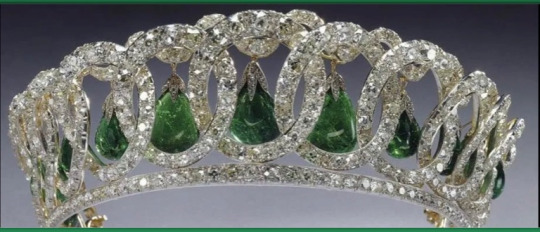


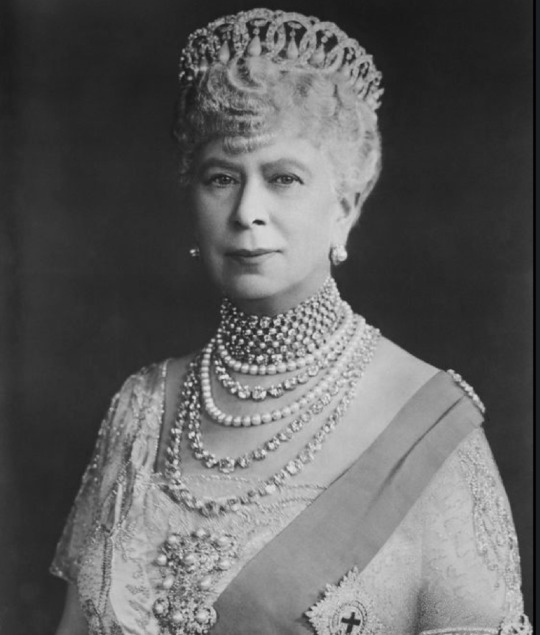
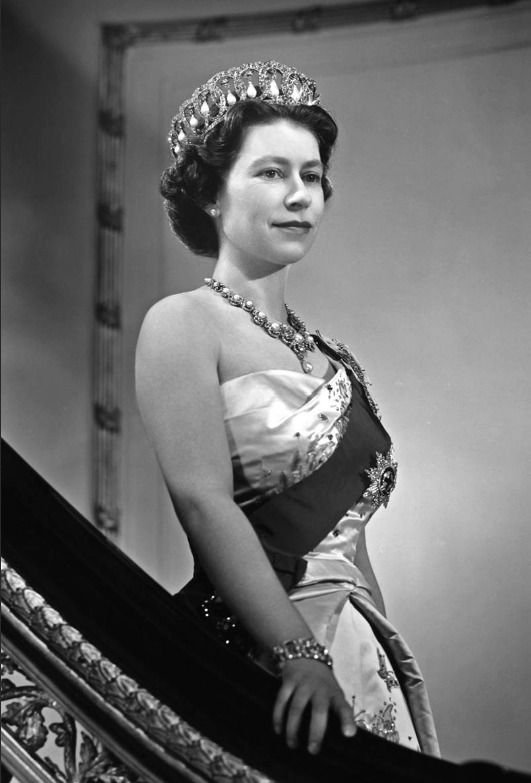
A Brief History of the Vladimir Tiara (and a little survey about who has worn it best)
The "Vladimir Tiara" was commissioned by Grand Duke Vladimir Alexandrovich (younger brother of Alexander III) from Bolin (Romanov's court jeweler) around the time of his wedding to his wife, Grand Duchess Maria Pavlovna the elder (also known as Grand Duchess Vladimir.) Vladimir and Miechen, as she was known, was a formidable couple who ran a rival court to that of Nicholas II.
When the end came and the Grand Duchess had to flee Saint Petersburg, the tiara was left in a safe well hidden in her Moorish boudoir in her palace in Saint Petersburg. It was later smuggled out of the palace by her son Boris and a British art dealer (that in itself is a whole saga,) taken out of Russia and deposited in a bank in England. The Vladimir Tiara was inherited by Miechen's only daughter, Grand Duchess Helena Vladimirovna (Princess of Greece through marriage.) When Helena was ready to sell it, Queen Mary of the United Kingdom was ready to buy it. The jewel needed repairs which its new owner quickly executed. When Queen Mary died, her grandaughter, Elizabeth II of England, inherited the piece. To judge by the many times she has worn it, it was one of her favorites.
Grand Duchess Helena, Princess of Greece, does not seem to have worn her mother's famous tiara. I have not found any photographs of the Queen Mother, Princess Diana of Wales, the Duchess of Cambridge, or Camilla, Queen Consort, wearing the Vladimir Tiara. The tiara that I have seen on Diana, Cate, and Camilla, which is somewhat similar, is the "Lovers Knot" (I made an error and described Diana wearing the Vladimir, when she was, in fact, wearing the Lover's Knot, and had to correct this note.) Let's see in whose head this beautiful tiara alights next!

Thank you so much for answering the following survey (entirely for fun.)
#Romanov#Romanov Family#Queen Mary of the United Kingdom#Queen Elizabeth II#Grand Duchess Maria Pavlovna#Grand Duchess Helena#The Vladimir Tiara
9 notes
·
View notes
Text

Adventurous, caring, resourceful, sensitive, cheerful, spontaneous. Talkative, unruly, impulsive, naive, absent-minded, resentful.

A law professor, Steven Gray was only supposed to teach in Reykjavik for a year. And he wasn’t supposed to fall in love with Helena Arondóttir, marry her, and settle in the capital of Iceland to start a family. But life would be boring, if one always did what is expected. Scarlett Ivy Gray isn't one to argue with that.
About Scarlett.

She is bilingual, and can speak both English and Icelandic, as her father addresses her in the former and her mother uses the latter.
Because she’s spent most of her life in Reykjavik, Scarlett considers herself an Icelander.
She however holds both nationalities and manages to blend in with the crowd when in England, understanding the different codes of the country.

When she was 16, she was spotted by a model scout. While she didn't take it seriously at first and only saw it as way to earn a bit of money and become independent, she's been modelling ever since.
Scarlett mostly goes by Scar, avoiding to state her full name. However, her manager convinced her to use it for work, and to never dye her red hair. Those distinctive features tend to draw attention to her — which she loves.

Because she used to love science, her parents always pictured her in a white coat, becoming a renowned doctor or physicist. They actually sent her to Cambridge - where Steven is from - to study medicine. However, logical and critical thinking soon gave way to beliefs, superstitions, and a rebel mind.
To this day, Scarlett actually still makes her decisions using a tarot deck she was given on her twelfth birthday. She keeps it close at all times.

While she settled in England, Scarlett did not graduate, and made it clear she would never be a doctor. She now collects odd jobs, still models, but also reads palms, cards, and everything that has to do with the stars.
Scarlett is confident, and is said to be the life of the party. It would be hard to count the number of parties she’s thrown, and the amount of adventures she’s had with her friends. The girl cannot stand still, and can always be found outside, getting ready for the next stunt.
This might be why, even though she loves modelling, she usually wears layer upon layer, and oversized clothes. Comfort comes first.
She’s had the same group of friends since kindergarten, but easily made new friends when she showed up in Cambridge.
That being said, the loving relationship she had with her parents growing up isn't as enviable now.
0 notes
Text
Cecilia Payne

Cecilia Payne è l’astrofisica che ha scoperto di cosa sono fatte le stelle e il sole.
Contraddicendo le teorie dell’epoca, per prima ha teorizzato che fossero composte essenzialmente di idrogeno e elio.
Ogni studio sulle stelle variabili si basa sul suo lavoro.
È stata la prima donna a ottenere un dottorato in astronomia a Harvard e la prima a capo del dipartimento di astronomia, nel 1956, superando ostracismo, discriminazione e dopo che l’astronomo Henry Russell si era preso i meriti della sua scoperta sulla composizione del sole.
Cecilia Helena Payne nacque il 10 maggio 1900, a Wendover, in Inghilterra, dalla pittrice di origine prussiana, Emma Leonora Pertz e Edward John Payne, avvocato inglese, morto quando lei aveva quattro anni.
Cresciuta dalla madre, che riteneva uno spreco di soldi che una donna studiasse, si era diplomata e aveva frequentato la facoltà di astronomia aCambridge, ottenendo solo il certificato, nel 1923, le donne non potevano conseguire la laurea.
Vedendosi negata qualsiasi prospettiva di carriera in Inghilterra, aveva deciso di andare a Harvard, che offriva borse per ricercatrici.
Nel 1925 ottenne il dottorato con quella che è stata poi definita la più brillante tesi mai scritta in astronomia dal titolo “Stellar Atmospheres, A Contribution to the Observational Study of High Temperature in the Reversing Layers of Stars”.
La tesi indicava la stretta correlazione tra la classe spettrale delle stelle e la loro temperatura e come l’idrogeno fosse di gran lunga il maggior costituente del Sole, circa il 90%.
Il celebre astronomo Henry Russell, a cui si era rivolta già un anno prima per una consulenza, basandosi su conoscenze errate, le aveva sconsigliato di pubblicare il suo studio sulla composizione del Sole, ritenendo, insieme alla comunità scientifica che fosse il ferro. E, dopo pochi anni se ne prese il merito.
Nel 1930 Cecilia Payne ha editato la sua seconda pubblicazione Stars of High Luminosity, che segnava il suo interesse per le nova e le stelle variabili.
Harlow Shapley, il direttore dell’osservatorio di Harvard, cercò di ottenere per lei il titolo di professoressa, ma l’allora presidente dell’università, Abbott Lawrence Lowell, glielo aveva negato, perché era una donna.
Nel giugno 1956 ebbe finalmente la cattedra di astronomia, la notizia, per la sua eccezionalità, venne riportata anche dal New York Times. Pochi mesi dopo divenne presidente del dipartimento.
Ritiratasi dall’insegnamento attivo nel 1966, venne nominata professoressa emerita.
Si è spenta a Cambridge, il 7 dicembre 1979.
Per ricordarla è stata affissa una targa commemorativa sul muro dell’Università e niente di più.
La donna che ha scoperto di cosa è fatto l’universo è ancora praticamente sconosciuta alla maggior parte delle persone e non viene mai accennata nei libri di scuola.
Ogni studente delle scuole superiori sa che Isaac Newton ha scoperto la gravità, che Charles Darwin ha spiegato l’evoluzione e che Albert Einstein ha scoperto la relatività del tempo. Ma quando si parla della composizione dell’universo, i libri di testo si limitano a dire che l’atomo più abbondante nell’universo è l’idrogeno senza nemmeno accennare che a scoprirlo è stata Cecilia Payne.
0 notes
Text
Some of my favorite quotes from Helena Pycior's "At the Intersection of Mathematics and Humor"
"Who, the critics challenged, could conceive of a 'quantity less than nothing'?"
"In short, with the symbolical approach, the traditional image of mathematics as a science of meaningful terms, self-evident principles and absolute truths began to crumble."
"...three major Victorians who combined humor and algebraic themes..."
"The intent of the letter to the Vice-Chancellor was incongruous with Frend’s position in regard to Cambridge: Frend wrote to apply for the Lucasian professorship, even though five years earlier (in 1793) he had been banished from the University."
"Unlike the play, the essay was imitative and did not sufficiently exploit the mathematically ridiculous."
"Neither Dodgson nor Frend, for example, would read a page of a mathematical textbook beyond what he understood."
"De Morgan proved that humor could be turned against mathematical quackery and also employed by a (sometimes lukewarm) symbolical algebraist to promote understanding of the new algebra and related developments."
"Dodgson himself attacked circle-squaring as a "delusive phantom""
"Christ’s Church, Oxford (which was sorely deficient in mathematics and science)"
"with visions of lines multiplied by lines, quantities less than nothing, and symbolical algebra dancing in his head"
"[Alice], apparently having acquired some mathematical subtlety between the first and second Alices, objects to what she now sees as impossible subtraction."
"Alice finds that mathematics is no mainstay of truth and certainty, and cannot save her from the madness of the underground world."
"Put succinctly, the symbolical algebraists sought formulas relating symbols which, although originally meaningless, could eventually be interpreted as representatives of many different mathematical phenomena."
"the card people, who are realizations of the worst fears of the opponents of the symbolical approach."
1 note
·
View note
Text
Couple weeks ago I posted a little Red White and Royal Blue fic, and the other day I made a royal family family tree with, yes, the extra members I referred to in it, but also (obvs) those who appear in the book and the movie, and I think it can be made to comply with either canon with only a small number of slight adjustments.

Readers who are not interested in my fic will disregard everyone on the right side of the diagram, beginning with Princess Louise b. 1964 and all the way to the edge of the page. But otherwise, reading from the bottom up, check it out:
The film calls Philip Duke of Cambridge, but the book seems to suggest Cambridge is what Henry will be created duke of when he marries, so I gave Philip the dukedom of Kendal instead. (The film also makes Henry the middle child, so swap them round if you want.)
I believe making Catherine the Princess of Wales and her late husband the Duke of Edinburgh works for both the film and the book; in the book Henry says they all used Wales as a surname at school, but even if a monarch with no sons created their eldest daughter Princess of Wales they wouldn’t make her husband Prince of Wales, so Arthur can be imagined to have accepted the dukedom of Edinburgh out of necessity—so when film!Henry tells the kids in the oncology ward that his mother is the Duchess of Edinburgh, he’s not wrong (I mean, why would he get his own mother’s title wrong, but you know what I mean).
I��ve made Henry’s grandparents James and Mary so they can be either King James III (shown here) as in the film or Queen Mary III as in the book. (She wasn’t numbered in the book, but there have been two Queens regnant Mary, so.) I threw in John II for book!Henry when he yells at Philip that they had a great-uncle who abdicated because he was a Nazi; he’d have had to abdicate because he had been a Nazi or else he’d have had to have been much older than James Or Mary, but that’s fine. Lop him off the tree if you’re film-only and don’t care about that line in the book.
Take the previous generation or leave it; I needed that layer to get the extant Cumberlands into the royal family whose schedules Alex was looking up, but they’re not necessary for the film or the book, so it’s fine to stretch the generations out a few years if you like and make Helena Victoria the kids’ great-grandmother rather than great-great; then you can give her husband whichever surname you prefer, Mountchristen (book, and assume it hyphenated with Windsor after the royal family changed it to Windsor in WWI as happened in real life) or Hanover-Stuart (film, and I think that name had to come back in from outside, because in a world that has the Victoria and Albert Museum the Hanover and [especially] Stuart dynasties were both long gone).
Queen Helena Victoria is the furthest-back person I invented myself; I made her the matriarch of this fictitious (counterfactual, nonhistorical, whatever) royal family by suggesting that in RWRB world (a) Prince Albert Victor, the eldest son of Edward VII, did not die in 1892 as he did in ours and (b) Edward VII himself did die of the appendicitis that in our world only delayed his coronation ceremony by a few months. That gives us a solid year of Edward VII cementing the role he’d pretty well established for the whole royal family in his long tenure as Prince of Wales (he really instituted the “appearance” as we now know it) but gets him out of the way eight years earlier than in real life to make way for his fictitious heirs.
I have allowed this Prince Albert Victor, who isn’t dead after all, to marry his true love, Hélène of Orléans, who I assume in this timeline was allowed to convert to C of E to marry him rather than forbidden by both her father and the Pope to leave the Catholic church. That being the case, it could be that his younger brother Prince George—known to the real world as George V—would have married Mary of Teck (who in real life had, before she married George, been engaged to Albert Victor at the time of his death) and had the same children and grandchildren he had in real life, only nobody cares? But even more likely is that Mary of Teck never entered into the matter, because Albert Victor married Hélène so Mary wasn’t called for, and this fictitious spare George married Marie of Edinburgh, whom he proposed to first. Or maybe he died young, rather than surviving typhoid as he did in real life in 1892 around the same time pneumonia got his brother. In any event, given a surviving Albert Victor, George’s descendants would be as peripheral by now to the fictitious royal family as the descendants of Victoria’s younger children are to the real one. (That is, it’s probably been enough generations that they could marry back in, but otherwise, pfft.)
0 notes